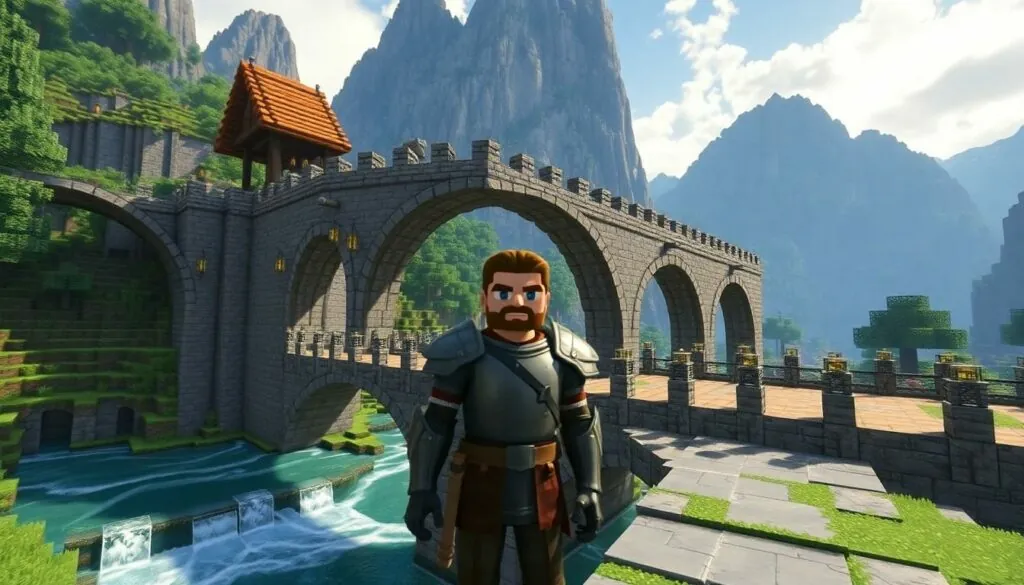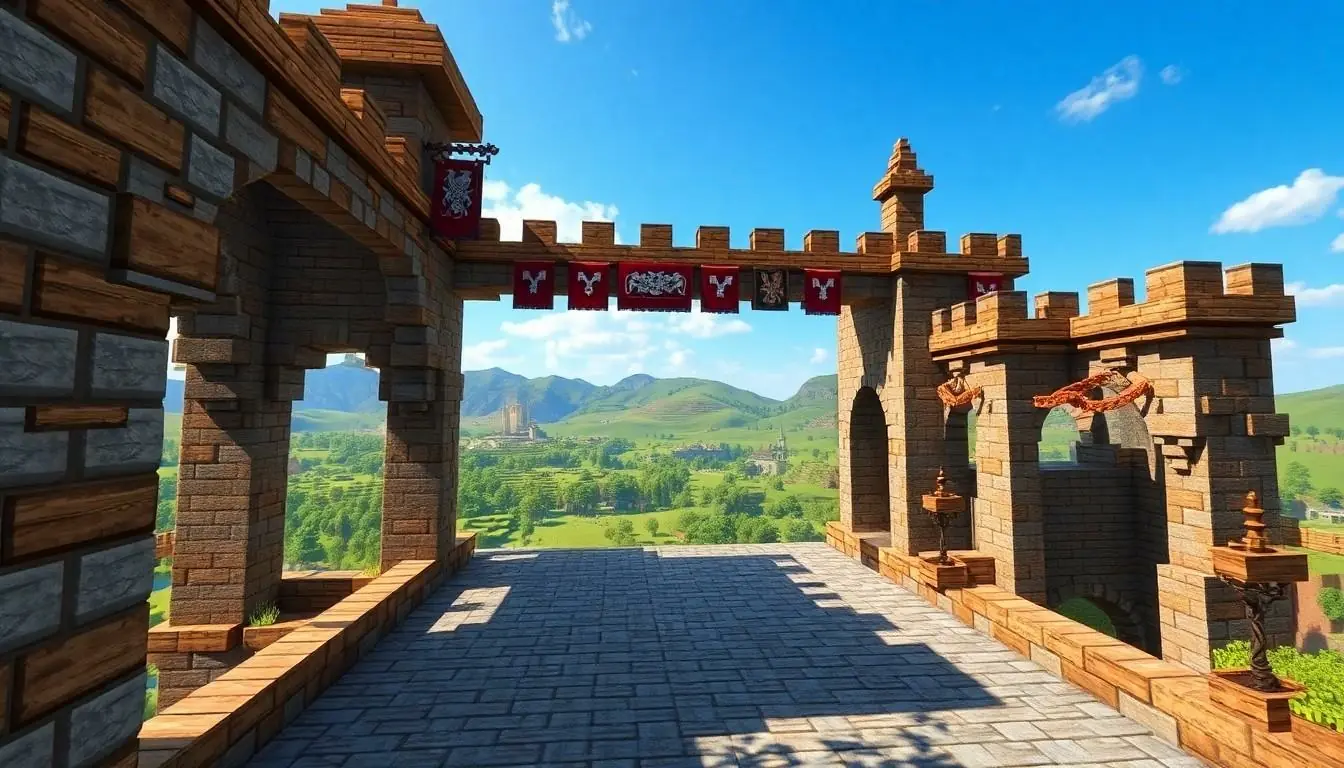Table of Contents
ToggleIn the enchanting world of Minecraft, players can unleash their creativity and build structures that defy the laws of physics. Among these creations, the medieval bridge stands out as a testament to both artistry and engineering prowess. It’s not just a way to cross a river; it’s a grand statement that says, “I’m a master builder, and I don’t just play the game—I redefine it!”
Overview of Medieval Bridge Minecraft
Medieval bridges in Minecraft offer an expansive canvas for creativity. Players often focus on utilizing various building materials such as stone, wood, and iron to construct structures that mirror historical designs. A well-designed bridge serves as a functional pathway while enhancing the game’s aesthetic.
Construction techniques vary among players, with popular designs including arch, beam, and suspension styles. Each approach presents unique challenges and opportunities for innovation. Players frequently draw inspiration from historical references, creating structures that reflect the engineering feats of the medieval period.
Attention to detail plays a crucial role in the success of these builds. Utilizing decorative elements like lanterns, banners, and foliage adds depth and character. Opting for variations in height and width allows for customization, creating bridges that stand out in any landscape.
Functionality remains a key consideration in the design of medieval bridges. Many players ensure their creations accommodate different types of transport, including minecarts and boats. Implementing redstone mechanics can further enhance accessibility, providing players with moving parts or mechanical drawbridges.
Environmental integration enhances the immersive experience of these structures. Positioning bridges over rivers or in mountainous regions connects them seamlessly to the surroundings. Players often incorporate natural features like waterfalls or cliffs, adding to the realism of the build.
Building medieval bridges in Minecraft exemplifies both creativity and practical engineering. These structures reflect not just artistic vision but also an understanding of structural integrity and game mechanics. Each bridge tells a story, showcasing the player’s journey and dedication to craftsmanship.
Design Inspiration
Medieval bridges in Minecraft draw inspiration from various architectural styles and historical accuracy, allowing players to explore unique design avenues.
Architectural Styles
Players often choose from several architectural styles when crafting medieval bridges. Common choices include arch bridges, known for their strong construction, and beam bridges, which provide straightforward designs. Suspension bridges appeal to those seeking a more intricate build with elevated features. Each style presents specific challenges, inviting players to experiment with different materials like cobblestone, oak planks, and iron bars. Unique combinations of these elements create visually captivating structures. Furthermore, adding decorative details such as pillars, gargoyles, or banners enhances the overall aesthetic appeal. With each design decision, players express their artistic vision while adhering to the principles of medieval engineering.
Historical Accuracy
In pursuit of historical accuracy, players frequently reference real-world medieval bridge designs. Researching actual structures from history informs their building choices, resulting in realistic representations. For instance, bridges that appear in various European landscapes can influence player’s creativity. Incorporating elements like stone arches, wooden supports, and decorative carvings lends authenticity to the builds. Utilizing accurate proportions and materials reflects an understanding of medieval engineering methods. By integrating these characteristics, players successfully create immersive experiences that transport viewers to a different time. Attention to historical detail not only elevates the design but also enhances the gaming experience.
Building Techniques
Building techniques for medieval bridges in Minecraft combine creativity with thoughtful planning. Players often select materials that reflect historical styles, enhancing the authenticity of their designs.
Materials and Tools
Stone, wood, and iron serve as common building materials for medieval bridges. Cobblestone provides a rustic look, while oak planks offer warmth and texture. Players use tools such as axes for wood, pickaxes for stone, and crafting tables to assemble complex designs. Additionally, lanterns and fences add necessary decorative touches, contributing to both aesthetics and safety. Redstone mechanics often feature in more intricate bridges, improving functionality and creating an engaging experience.
Step-by-Step Construction
Building a medieval bridge requires patience and strategy. First, players should plan the bridge’s location and dimensions. Next, laying down the foundation using durable materials like cobblestone ensures stability. After the base is complete, it’s crucial to add support pillars for structural integrity. Players then focus on the road surface, integrating decorative elements as they go. Incorporating lighting and foliage enhances the visual impact, ensuring a cohesive design from every angle. Finally, testing the bridge with various transportation methods guarantees its functionality within the game.
Gameplay Integration
Medieval bridges in Minecraft integrate seamlessly into gameplay, enhancing both functionality and creativity.
Functional Uses in Minecraft
Players design these structures to support various transportation methods. Minecarts frequently traverse tracks built on bridges, while boats glide beneath arches formed over water. Redstone circuits enhance accessibility by powering mechanisms such as drawbridges, allowing seamless movement between different zones. Players construct bridges to serve as crucial links between biomes, facilitating exploration and resource gathering. Each bridge supports a unique ecosystem, where players create routes that connect villages, farms, and mines, optimizing travel efficiency within the game.
Aesthetic Enhancements
Aesthetic appeal plays a vital role in bridge design. Players often employ decorative features such as banners and flower boxes to create visually striking builds. Incorporating lighting elements, like glowstone or lanterns, enhances nighttime visibility and adds charm. Varied material choices, including cobblestone, oak, and stone bricks, contribute to diverse architectural styles. Many players also blend foliage, using vines and shrubs to ensure bridges harmonize with the surrounding landscape. Such thoughtful design elements allow players to express their artistic vision while enriching the overall experience in Minecraft.
Community Contributions
The Minecraft community actively contributes to the development of medieval bridges through innovative designs and shared knowledge. This enthusiasm fosters collaboration and inspiration among players.
Popular Builds
Many players showcase their favorite medieval bridge builds online, captivating others with impressive designs. Notable examples include the iconic Rialto Bridge, often recreated with intricate detailing and an emphasis on historical accuracy. Various YouTube channels feature builds such as stone arch bridges and wooden beam structures, attracting viewers eager to replicate these styles. Players frequently display unique flourishes, like decorative towers and dynamic lighting. Individual creativity shines, as each player adds personal touches that reflect their unique vision and skills. Engaging with these builds showcases the diversity within the Minecraft community, inviting others to explore their own creativity.
Resources and Tutorials
Numerous resources and tutorials equip players with the necessary guidance to construct medieval bridges effectively. Websites, such as Minecraft Wiki, provide insights into suitable materials and building techniques. YouTube channels specialize in step-by-step tutorial videos, simplifying complex designs for newcomers. Players often share schematics on platforms like Minecraft Schematics, allowing others to download and modify unique structures. Reddit communities also foster discussions, where players share tips and tricks for achieving historical accuracy. These resources encourage skill development and inspire unique bridge designs throughout the game. The sharing of knowledge strengthens the community, allowing for continuous learning and creativity.
Conclusion
Building medieval bridges in Minecraft is a testament to the creativity and engineering skills of players. These structures not only enhance gameplay but also serve as artistic expressions that reflect historical accuracy and imaginative design. The integration of various materials and techniques allows players to create unique bridges that stand out in their worlds.
As players continue to share their designs and techniques within the community, the possibilities for medieval bridge construction expand even further. This collaborative spirit fosters innovation and inspires new builders to explore their creativity. Ultimately, each bridge becomes a narrative of its creator’s journey, enriching the Minecraft experience for everyone involved.





